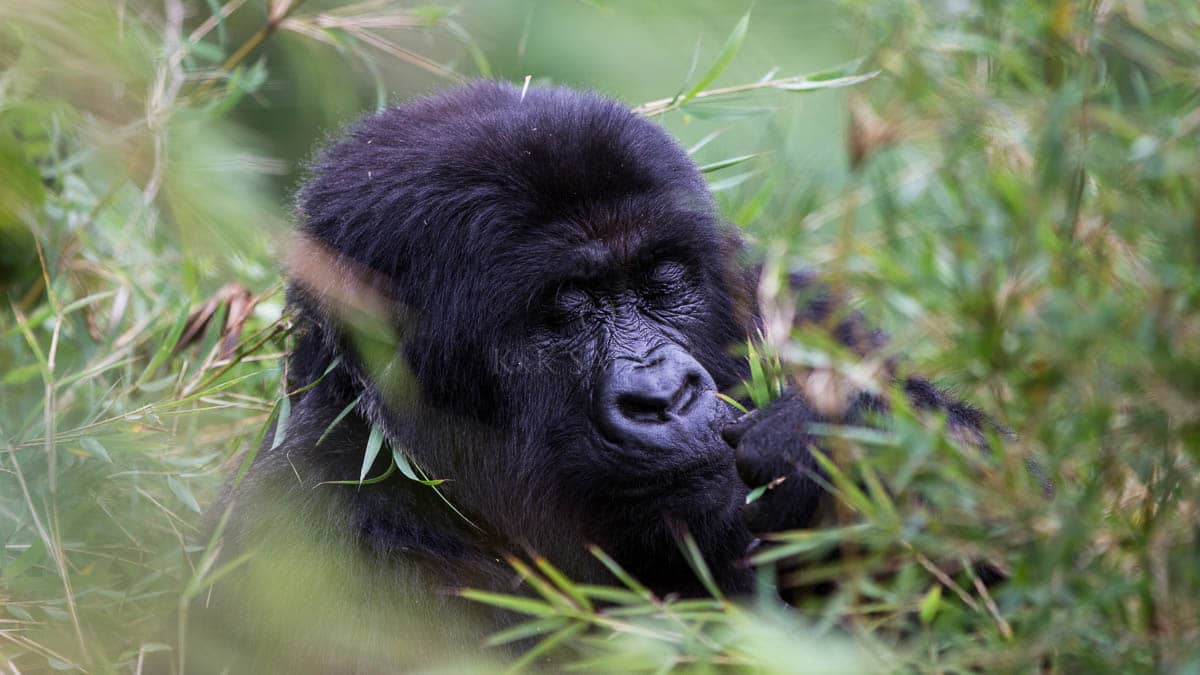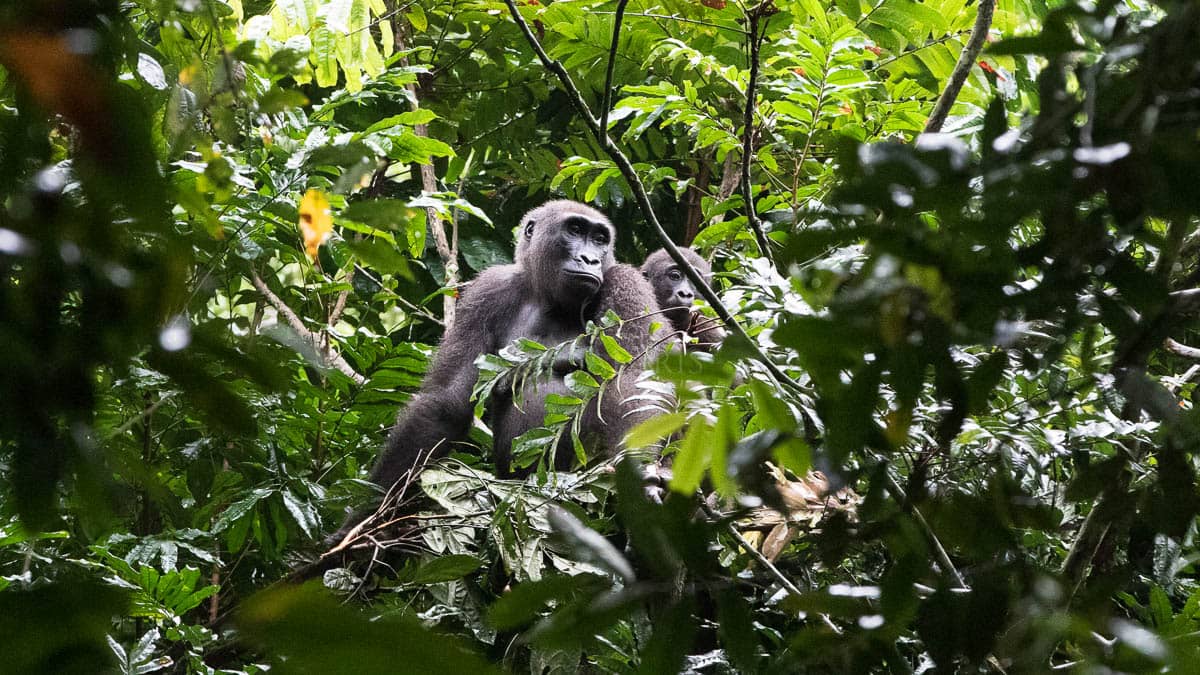Primates
Unique moments alongside the great apes
In 1900, about 1 million chimpanzees lived in the wild.Today, there are 300,000 left and barely 100,000 for the gorilla population. Despite international protection and awareness programs, all primates on Earth are very vulnerable to extinction. It is estimated that they could become extinct within 20 to 50 years depending on the species. It is for this reason and out of passion that we are adding a page dedicated to chimpanzees and gorillas that we have been able to observe on several occasions and for whom the emotions are unique and indelible as soon as we approach them. By participating in a trip and respecting the rules of observation, you also contribute to the protection of these species, which play a fundamental role in the balance of our ecosystems, our health and our planet.
Population of gorillas: less than 100,000 individuals, 2 species for 4 subspecies:
- In the West: Western lowland gorilla
- In the West: Cross River gorilla
- In the East: Mountain gorilla
- In the East: Western lowland gorilla or Grauer’s gorilla
Population of chimpanzees: less than 300,000 individuals, 4 subspecies:
- Western chimpanzee
- Central chimpanzee
- Eastern chimpanzee
- Nigeria-Cameroon chimpanzee
Chimpanzees
My adopted brothers
Chimpanzees are distributed over 22 countries of equatorial Africa from tropical rainforests to shrubby and wooded savannas up to 3000m altitude. Their ability to create and use tools, their sensitivity, their emotions, the richness of their social ties and the diversity of their personalities make them the most coveted animal in terms of scientific research, poaching and as a pet. If their appearance differs from men by brown hair all over their body, they climb trees and their language is not verbal, it is because they share 98.6% of DNA with the species human. It is therefore an essential fight to respect and protect them.


Moutains gorillas
A weak strenght
It’s hard to stand still in front of a mountain gorilla as his gaze touches your heart. As their name suggests, they inhabit the Rwenzori Mountains, the Virunga National Park in Congo, the Volcanoes National Park in Rwanda and in the Bwindi Forest in Uganda, between 1000 and 4000m above sea level that the mountain gorillas. They are more abundant and have thicker fur than other gorillas which allows them to withstand temperatures that can approach 0°. Probably the most impressive of primates, they are nonetheless the most peaceful and discreet despite their portrayal in literature and cinema. They are also our closest cousins after chimpanzees and bonobos.
Western lowland gorillas
Nugget from the heart of Africa
Less represented than mountains gorillas because they are more difficult to access, western lowland gorillas differ from their eastern cousins by their smaller size, their brown-grey coat and their chestnut torsos. Their skull is also wider, their eyebrows more pronounced and their ears smaller. Due to the destruction of their habitat and poaching to supply Asian bushmeat networks and markets, they are classified as critically endangered species. Distributed over the plains of western Congo, Gabon, Cameroon and Central Africa, it is difficult to give an accurate estimate of their population.

An experience to live and feel

Exclusive expeditions to Congo, Uganda, Rwanda and Tanzania
Let our expertise guide you


